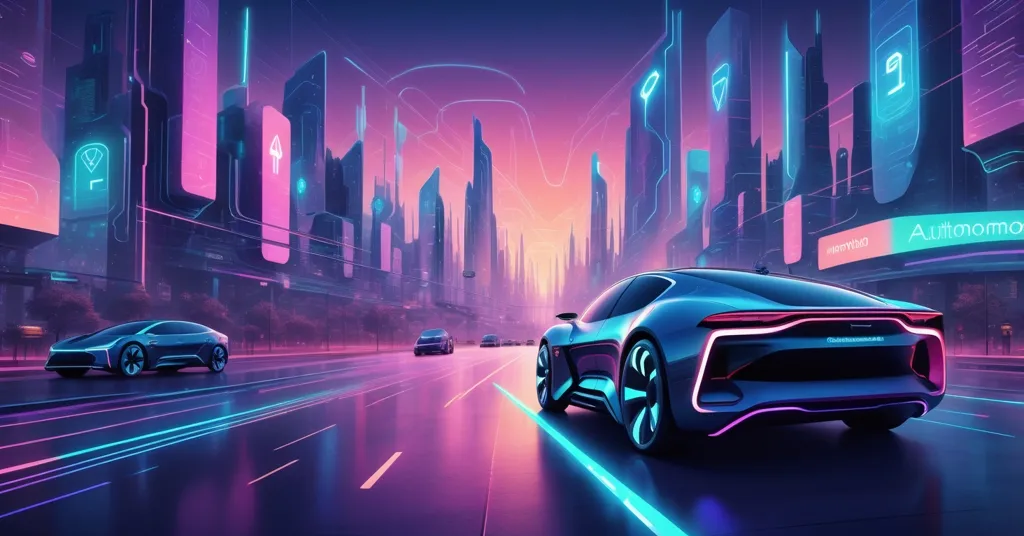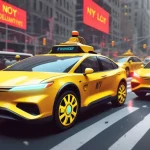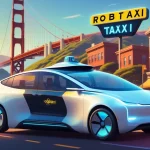Tesla Robotaxi 2025 Launch: Autonomous Hype or Real Disruption?

Tesla Robotaxi Launch 2025: Hype or the Autonomous Future?
Tesla’s stock jumped over 8% on June 23, 2025, after the company rolled out its long-awaited robotaxi service in Austin, Texas, just a day earlier. But with the surge crumbling by June 24 and analysts throwing cold water on the hype, is this another Tesla pipe dream or a real step toward disrupting transportation as we know it?
- Launch Details: Tesla debuted its autonomous ride-hailing service on June 22, 2025, in Austin with a small fleet of Model Y vehicles.
- Stock Swing: An 8% rally on June 23 fizzled out by June 24, signaling market doubts.
- Expert Doubts: Goldman Sachs and industry voices question Tesla’s ability to scale amidst tech hiccups and fierce competition.
Let’s break down the glitz and grit of Tesla’s latest move. On June 22, 2025, the electric vehicle giant launched its robotaxi technology in Austin, Texas, using a modest fleet of 10-20 Model Y vehicles. These cars operate within a geofenced area—a predefined zone where the tech has been rigorously mapped and tested. For now, a Tesla employee rides shotgun as a safety monitor, a far cry from the fully driverless future Elon Musk envisions. The company’s approach hinges on its Full Self-Driving (FSD) technology, which relies solely on cameras and artificial intelligence to “see” the road, much like human eyes feeding data to a learning brain. This contrasts with competitors who bolster their systems with lidar—laser-based tech that creates precise 3D maps of surroundings—and radar for added reliability.
Musk’s ultimate goal is audacious: millions of Tesla vehicles operating autonomously by the second half of 2026. If achieved, it could redefine mobility, aligning with the ethos of disruption and decentralization we champion. But the path is riddled with potholes, from technical limitations to cutthroat competition and regulatory minefields. Let’s unpack why this rally—both on the streets and the stock charts—might be more sizzle than substance.
Stock Surge and the Inevitable Reality Check
The 8% stock spike on June 23 screamed investor excitement over Tesla’s FSD hitting the streets commercially. Yet, the drop just a day later on June 24 shows the market isn’t fully sold. Goldman Sachs analyst Mark Delaney didn’t pull punches, sticking to a neutral rating on Tesla with a 12-month price target of $285, suggesting an 18% downside from the June 23 close. His skepticism isn’t baseless, as noted in analyses questioning whether Tesla’s current rally can sustain itself.
“The use of an Austin-specific tech stack, a Tesla employee being present in the vehicle (albeit on the passenger side), and the navigation/lane issue reported in the first day of use suggests scaling will be slow in the near-term in our view,” Delaney stated.
What’s he getting at? The tech powering these robotaxis is tailored for Austin’s roads, not easily adaptable to other cities with different traffic quirks or layouts. Day-one reports of navigation and lane glitches, plus the need for a human monitor, signal this isn’t a plug-and-play solution. For those new to the autonomous game, scaling means expanding beyond a small, controlled test zone to diverse environments—a process that’s as much about software as it is about navigating a maze of local regulations.
Tech Challenges: Cameras vs. the World
Tesla’s camera-only FSD system is both its boldest bet and its Achilles’ heel. Unlike Alphabet’s Waymo, which uses a mix of lidar, radar, and cameras for a layered safety net, Tesla’s setup depends on visual data processed by AI to make split-second driving decisions. In ideal conditions—clear weather, well-marked roads—this can work like a charm. But throw in fog, heavy rain, or low-light urban chaos, and cameras struggle where lidar shines, mapping surroundings with precision regardless of visibility. Community discussions highlight numerous challenges with Tesla’s Full Self-Driving tech that reinforce these concerns.
Think of Tesla’s AI training as teaching a kid to ride a bike. The more varied the terrain they practice on, the better they get. Similarly, Tesla needs massive amounts of driving data to teach its AI how to handle rare “edge-case” scenarios—like a pedestrian darting out or a freak snowstorm. With only a handful of vehicles in Austin, that learning curve is steep. Industry expert Philip Koopman from Carnegie Mellon University warns that mastering these complexities could take years, not months, casting doubt on Musk’s 2026 timeline.
Competitive Threats: Waymo Ahead, China Undercutting
The autonomous vehicle race isn’t a solo sprint—it’s a brutal marathon with heavyweights closing in. Waymo, backed by Alphabet, is already lapping Tesla, operating robotaxis in multiple U.S. cities with a tech stack that’s proven more robust in messy urban settings. Their use of lidar and radar gives them an edge in reliability, something Tesla’s camera gamble hasn’t yet matched, as explored in detailed comparisons between Tesla and Waymo.
Then there’s China, the world’s largest electric vehicle market, where local giants like BYD and Xpeng are slashing prices to bleed Tesla dry. Advanced Driver Assistance Systems (ADAS)—tech akin to Tesla’s FSD—are now standard or dirt-cheap in many Chinese models. BYD’s “God’s Eye” system, for instance, costs around $2,105 compared to Tesla’s $2,360, per industry analysis from A2MAC1. Analyst Taylor Ogan from Snow Bull Capital, a BYD investor, claims it outperforms Tesla in Shenzhen’s congested streets, a point echoed in reports on China’s competitive edge over Tesla in autonomous tech.
“One downside risk in this dimension is what has happened with the [advanced driver assistance systems] market in China, with many local [original equipment manufacturers] now including hands-free technology as a standard feature or at low cost even for mainstream vehicles,” Delaney cautioned.
China’s edge isn’t just price—it’s data. With millions of vehicles on the road, firms like BYD gather vast amounts of driving data to refine their AI, creating a feedback loop of improvement. Tesla, hamstrung by regulations barring data transfer from China to the U.S. for training, faces a geopolitical wall. Add to that sensor costs in China being 20-40% lower than in Western markets, as noted by Elena Zhelondz of A2MAC1, and Tesla’s profit margins could take a brutal hit.
Regulatory Roadblocks and Public Trust
Even if Tesla’s tech were flawless tomorrow, regulations could grind progress to a halt. Texas, Tesla’s home base, plays nice for now—autonomous vehicle rules are light, requiring only compliance with traffic laws and insurance. But proposed 2025 legislation might tighten the leash with stricter notification mandates. California, a crucial market, is a different beast. Tesla lacks driverless testing or deployment permits there, and getting commercial robotaxi approval means wrangling with both the DMV and the California Public Utilities Commission—a bureaucratic slog detailed in analyses of Tesla’s operational challenges in robotaxi deployment.
Public trust adds another layer of friction. Tesla’s faced flak for overstating FSD capabilities in the past, with incidents and lawsuits tied to crashes under scrutiny. If unsupervised testing leads to accidents, legal liabilities could pile up, not to mention the PR nightmare. This isn’t just a tech challenge; it’s a battle for hearts and minds, where one misstep could derail adoption.
Playing Devil’s Advocate: Tesla’s Potential Ace
Let’s not bury Tesla just yet. If their FSD software nails it, the rollout could be a game-changer, as Morningstar’s Seth Goldstein suggests. With over a million Tesla vehicles already on roads worldwide, equipped with FSD hardware, a single over-the-air update could transform a chunk of them into revenue-generating robotaxis. Unlike Waymo, which builds bespoke fleets from scratch, Tesla’s existing base is a dormant army waiting for activation, though some foresee significant scalability hurdles for Tesla in 2025.
“A rollout could be really quick. If the software works, Tesla robotaxi could drive any road in the world,” Goldstein said, though he tempered optimism by noting Tesla is still “testing the product.”
Look at Tesla’s track record in electric vehicles—they’ve disrupted an industry once thought untouchable. Musk’s history of eventual breakthroughs, despite missed deadlines, shows a knack for defying odds. Full autonomy by 2019? Missed. Robotaxis by 2020? Nope. But Tesla’s battery innovations and market dominance prove they can deliver—eventually. If FSD cracks the code, the decentralized freedom of personal robotaxis could echo the same ethos as Bitcoin’s war on fiat. It’s a big if, but not impossible.
Blockchain and Crypto: A Lifeline for Tesla’s Vision?
Here’s where Tesla’s robotaxi dream could intersect with the decentralized tech we’re passionate about. One of Tesla’s biggest hurdles—data sharing for AI training, especially across borders like China—could find a solution in blockchain. Decentralized networks allow secure, transparent data exchange among vehicles without central oversight. Imagine Teslas worldwide swapping real-time traffic insights on a blockchain, bypassing geopolitical restrictions while preserving privacy. It’s a futuristic fix that could turbocharge FSD’s learning curve, with research already exploring blockchain integration with Tesla’s autonomous systems.
Then there’s payments. Robotaxi rides could leverage cryptocurrency micropayments for seamless, peer-to-peer transactions. Bitcoin’s Lightning Network, known for near-instant, low-fee transfers, could handle fares in seconds, cutting out middlemen like traditional payment processors. Alternatively, Ethereum-based smart contracts could automate ride agreements—book a Tesla robotaxi, pay in ETH, and the contract executes without a third party. Given Musk’s past dalliances with Bitcoin and Dogecoin, this isn’t a wild stretch. It could even drive mainstream crypto adoption, marrying autonomous tech with financial freedom.
No such projects are live with Tesla yet, but the potential is tantalizing. Blockchain for vehicle-to-vehicle communication isn’t sci-fi—startups are already piloting similar concepts. If Tesla tapped into this, it could solve data woes and position robotaxis as a gateway for crypto in everyday life. It’s a win-win for disruption, shaking up both transport and finance.
What’s Next for Tesla’s Robotaxi Gamble?
Looking ahead, Tesla’s near-term milestones will be telling. Expanding beyond Austin to other U.S. cities—or even tackling California’s regulatory gauntlet—will test their scalability claims. New FSD software updates, expected in 2025, could address current glitches, while partnerships or pilot programs might hint at broader adoption. But Musk’s 2026 target for millions of autonomous vehicles feels more like a mirage than a roadmap, given the mountain of challenges.
As champions of disruption, we’re rooting for Tesla to shake up transport—but only if they ditch the hype and deliver the goods. Autonomous vehicles carry the same spirit as Bitcoin: decentralizing control, empowering individuals, and flipping the status quo. Yet, with tech limitations, brutal competition, and a history of overpromising, Tesla’s robotaxi rally feels more like a flashy stunt than a sustainable leap. Time—and data—will tell if this is a crash waiting to happen or a cruise to victory.
Key Takeaways and Questions on Tesla’s Robotaxi Push
- What triggered Tesla’s recent stock jump in 2025?
The debut of Tesla’s autonomous robotaxi service in Austin, Texas, on June 22, 2025, sparked an 8% stock surge the next day, fueled by investor optimism over Full Self-Driving tech hitting the streets. - Why are analysts skeptical about Tesla’s robotaxi scalability?
Goldman Sachs’ Mark Delaney cites slow scaling due to an Austin-specific tech stack, early operational glitches like navigation issues, and human monitors still required, projecting an 18% stock downside. - How does Tesla’s autonomous tech compare to rivals?
Tesla bets on cameras and AI alone, unlike Waymo’s mix of lidar and radar for added reliability in tough conditions, while Chinese firms like BYD undercut Tesla with cheaper, comparable driver-assistance systems. - What role could blockchain and crypto play in Tesla’s robotaxi future?
Blockchain could enable secure data sharing for AI training across borders, and crypto like Bitcoin’s Lightning Network or Ethereum smart contracts could streamline ride payments, boosting decentralized tech adoption. - Is Elon Musk’s 2026 goal for millions of autonomous vehicles realistic?
Experts like Philip Koopman doubt it, pointing to years needed for AI to master rare traffic scenarios, alongside regulatory barriers and fierce global competition.



